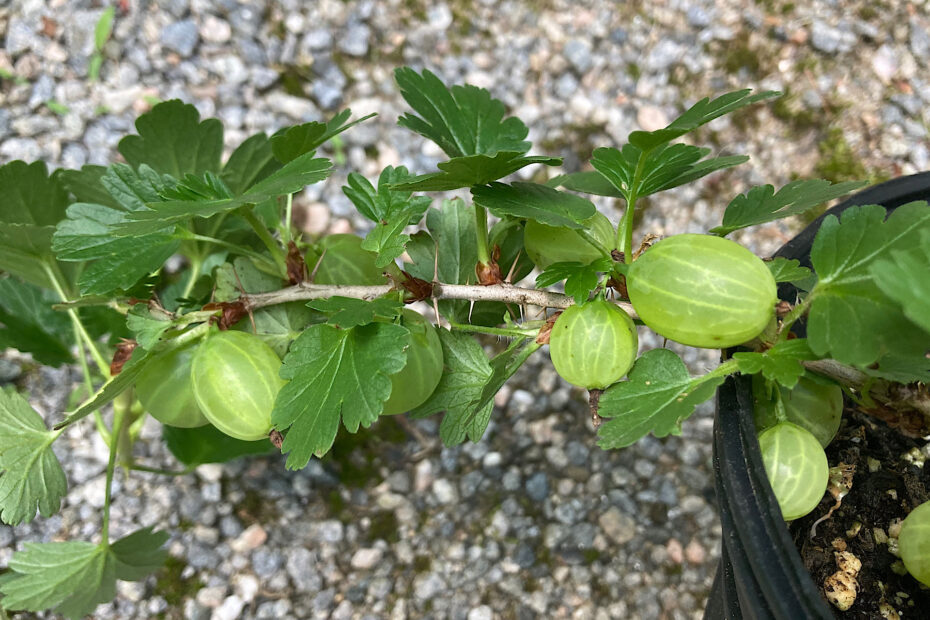I stumbled upon potted gooseberries at one of my favorite hide-away shops that stocks organic, reasonably priced plants. I didn’t know a whole lot about them at the start, but they are a delight as this year’s new garden addition. I’m exploring a “less grass and more food forest” landscape. My no-dig experimentation with vegetable gardening is increasing in production. The native flowering plants I’ve introduced have made a noticeable difference as pollinator attractors. And, now I’m adding fruits and berries to the palette.
If you are like me and know little about gooseberries, I’m happy to share what I’ve learned
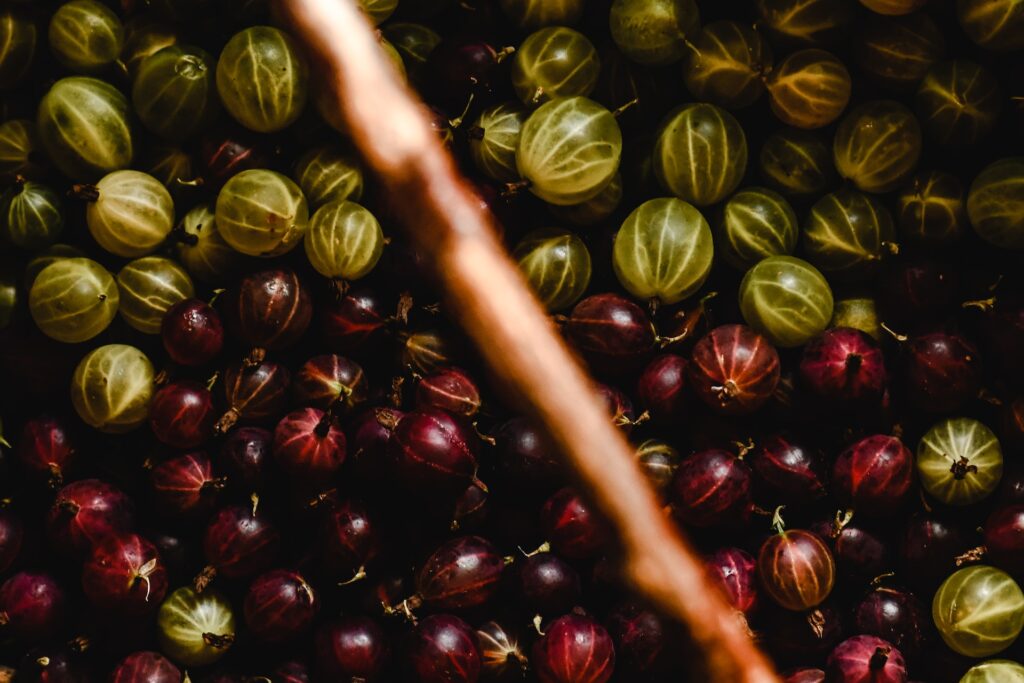
What is a Gooseberry?
Genus: Gooseberries belong to the genus Ribes. Ribes are erect or spreading perennial shrubs. The Ribes genus has two disctinct groups – currants and gooseberries. Both flower and produce true berries. A gooseberry has sharp, prickly thorns. Currants don’t have any spines.
Types: English or European gooseberry (Ribes uva-crispa). American gooseberry (R. hirtellum).
Origin: European gooseberries are native to Europe, Asia, and North Africa. American gooseberries are native to the Northeastern and North-Central United States and adjacent regions of Canada. The variety I chose for my garden is Hinnomaki Red (Ribes uva-crispa). It’s a heavy-bearing variety from Finland. It’s known to be rust and mildew-resistant (more on that later), and has a tangy outer skin and sweet flesh.
Colors: Gooseberries come in a variety of colors ranging from green, pink, red, purple, white, and yellow. The green varieties are known for tartness and the red tend to be sweeter.

Why Didn’t I Know About Them?
At least in my area, I have never seen gooseberries in the grocery store and I’m challenging myself to remember if I’ve ever seen them at the farmer’s market. Our under-appreciation may be the result of a federal law passed early in the 1900s, banning their cultivation.
Gooseberry plants carry blister rust fungus which is also an enemy of the white pine. It can kill the branches, tops and the entirety of the Eastern white pine tree. The federal ban was lifted in 1966, with the decision left to individual states on growing laws. Gooseberries grown today are primarily hybrids of European and American varieties, offering nice flavor and resistance to disease. Some New England states (MA, ME, NH, and RI) still regulate aspects of gooseberry production within their boundaries.
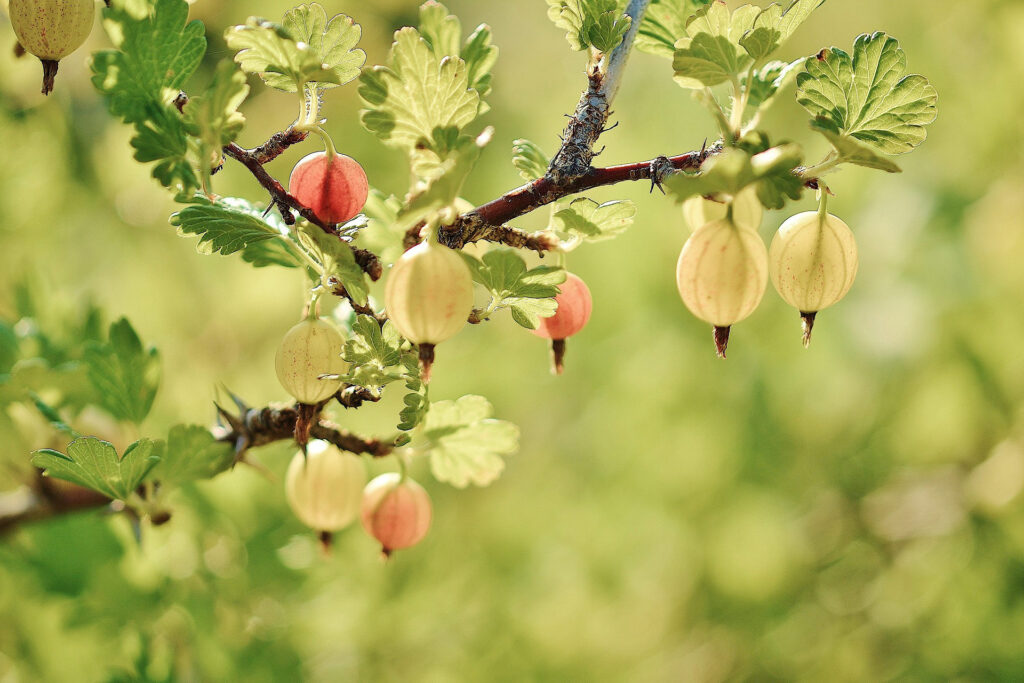
What Do Gooseberries Taste Like?
This was a lovely awakening for me! I first tried the berries when they were green. They were very tart, crunchy and rough textured; I’d go with mildly unpleasant. The best surprise came later when they had ripened to a deep purple/red. The skin kept its tartness, but the inside was sweet, juicy and delicious. I’ve never tasted anything quite like them; but my first impression was that they reminded me slightly of grapes – but not exactly.
When I looked up culinary descriptions of gooseberry flavor, others have also likened them to grapes as well as lemons and green apples. Baking sites recommend using gooseberries in some of the same recipes that you would consider using rhubarb. All I can say, is the marriage of tart and sweet bursting on the tongue is divine.
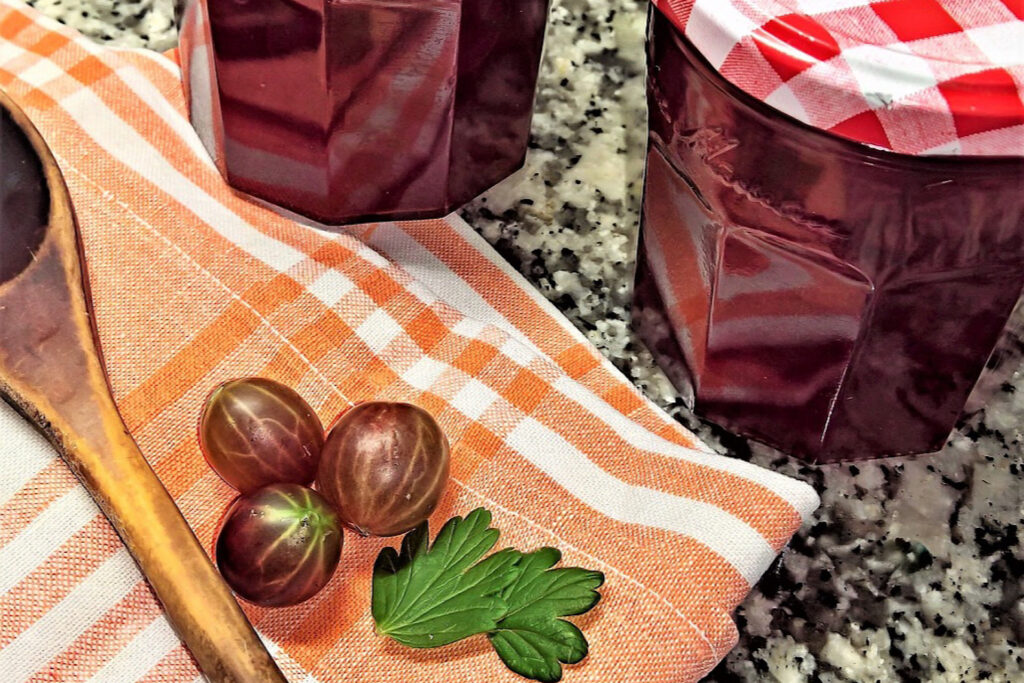
What are They Used For?
Gooseberries keep well and will remain fresh in the refrigerator for several weeks. There are lots of ways to add them into your diet.
- Eat them raw
- Freeze and use in lemonade or iced teas
- Salad garnish
- Simmered into pulled pork or other savory sauces
- Galettes
- Crumbles
- Pies
- Tarts
- Fools
- Jams
- Jellies
- Chutneys
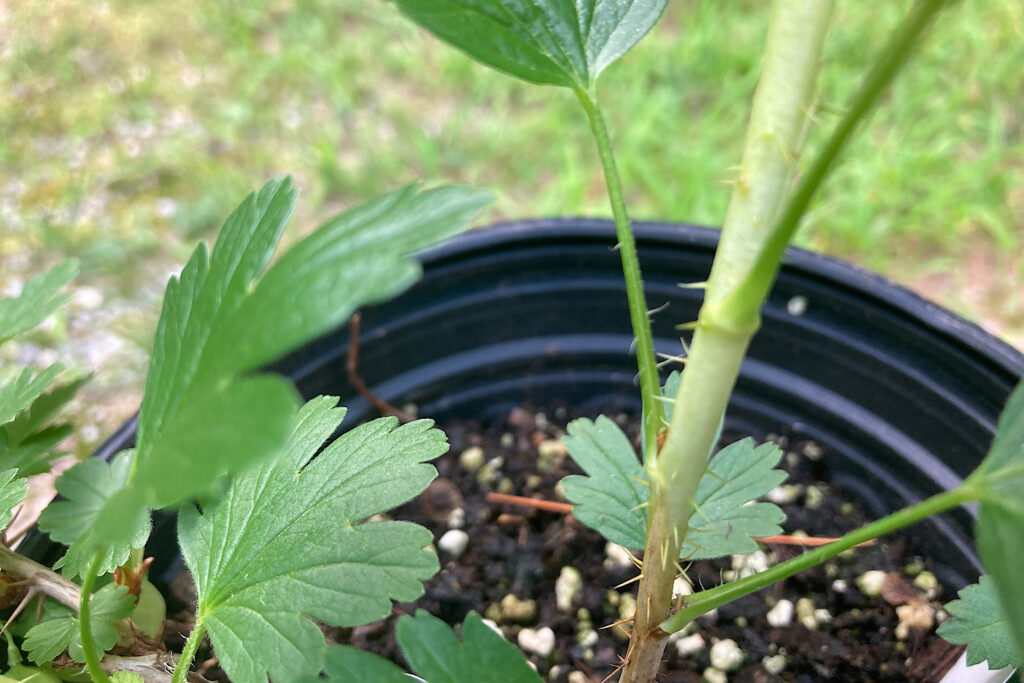
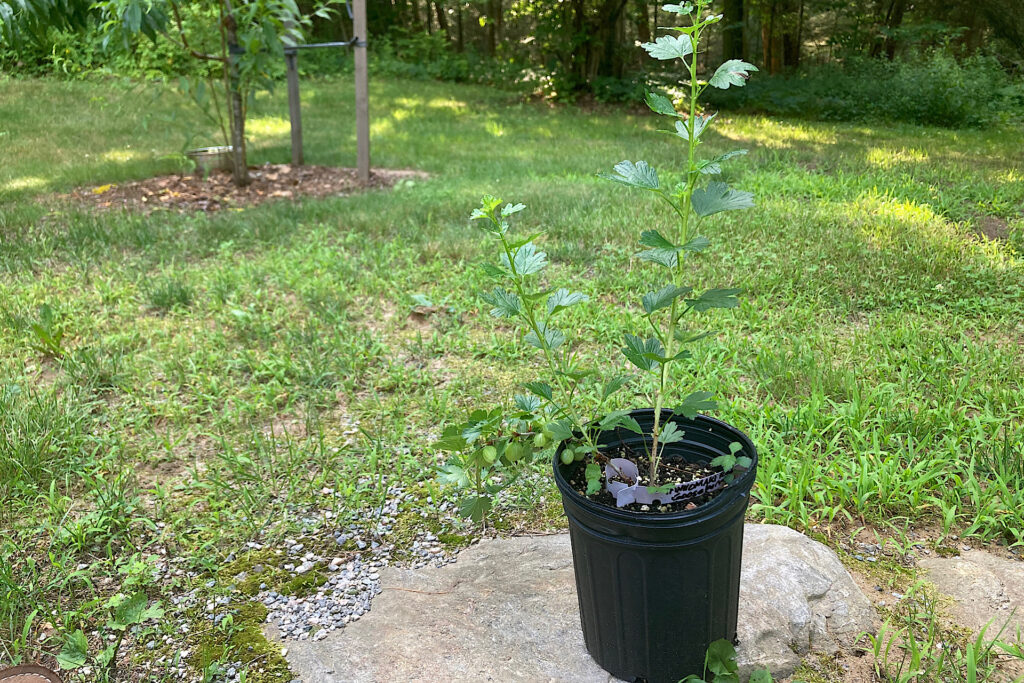
What Planting Conditions Does Gooseberry Prefer?
Before I get into telling you what the plant likes, let’s give you a little preference! Gooseberries, have very long, very sharp, very prickly thorns. And, they hurt! Make sure you place plants where you can access them from all sides. You will not want to go elbow-deep when picking berries. I planted mine on the edge of a raised garden bed. I have access to them when walking outside of the bed and I have a path behind them inside the bed. The rule of thumb on gardening sites is to place plants in the ground approximately 3 feet apart, in well-drained soil, with a PH between 5.5 and 7.0.
That being said, gooseberries are fairly easy to take care of. Plant them in full sun to partial shade. You will have better berry production in full sun. Harvest time is short though, occurring between July and August. I was lucky that my plant had berries on it when I brought it home in the container; typically canes will set fruit one to three years after planting. You will not need two plants for cross-pollination. Gooseberries are self-fruiting.
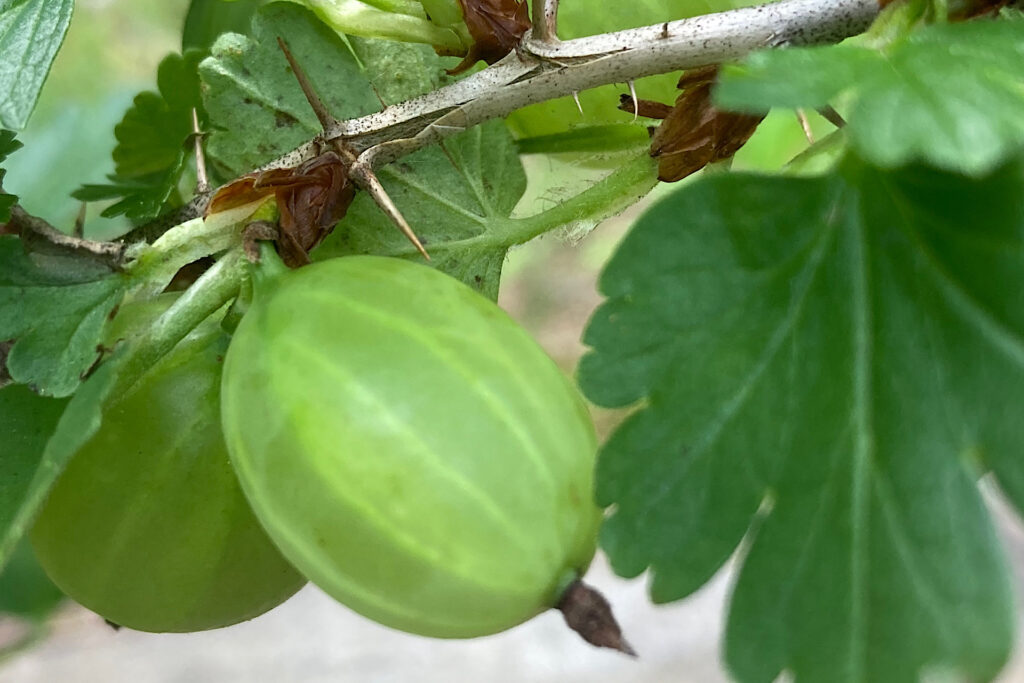
What is Required for Care and Maintenance?
Pests: Gooseberries are fairly pest-resistant. Insects that may be attracted are: spider mites, aphids, fruit worms/flies or cane borers. Luckily, these pests are usually controlled by beneficiary garden insects.
Nutrients: Gooseberry plants can tolerate marginal circumstances but will do their best in well-drained, rich soil. Compost and well-rotted manure are good fertilizer choices. It is recommended to add a few shovel-fulls in late fall.
Pruning: Make sure to remove old cane deadwood and leaf litter for healthy growth. Gooseberries should be pruned late winter (early March) in the United States. A mature shrub should have 9-12 canes after pruning. You can allow 4-5 new canes to develop each year. When pruning canes, cut them as close to the ground as possible.
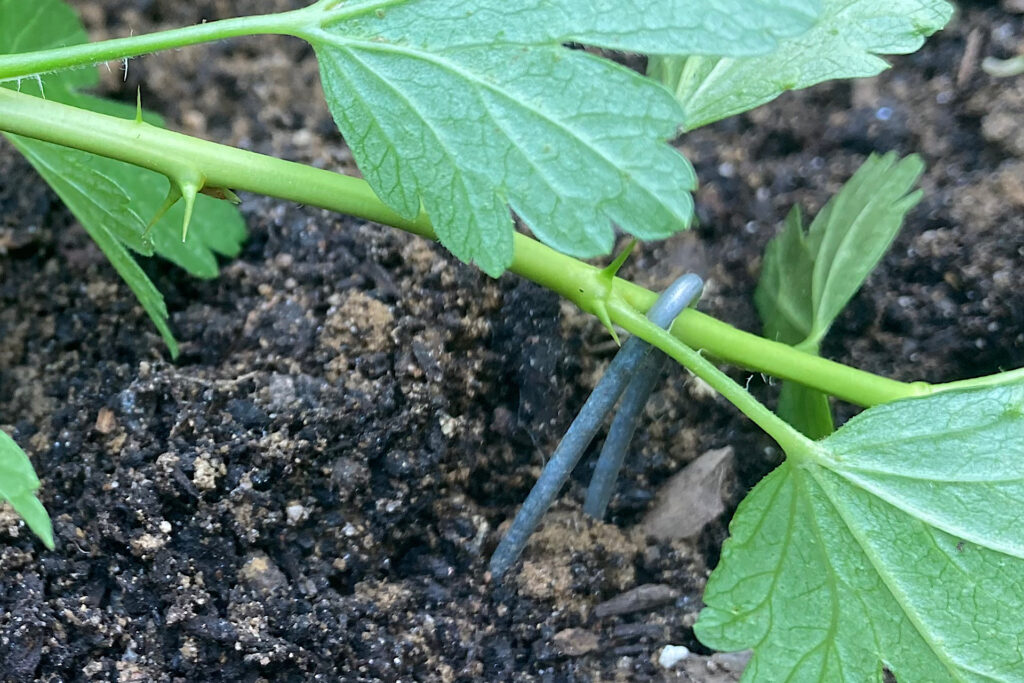
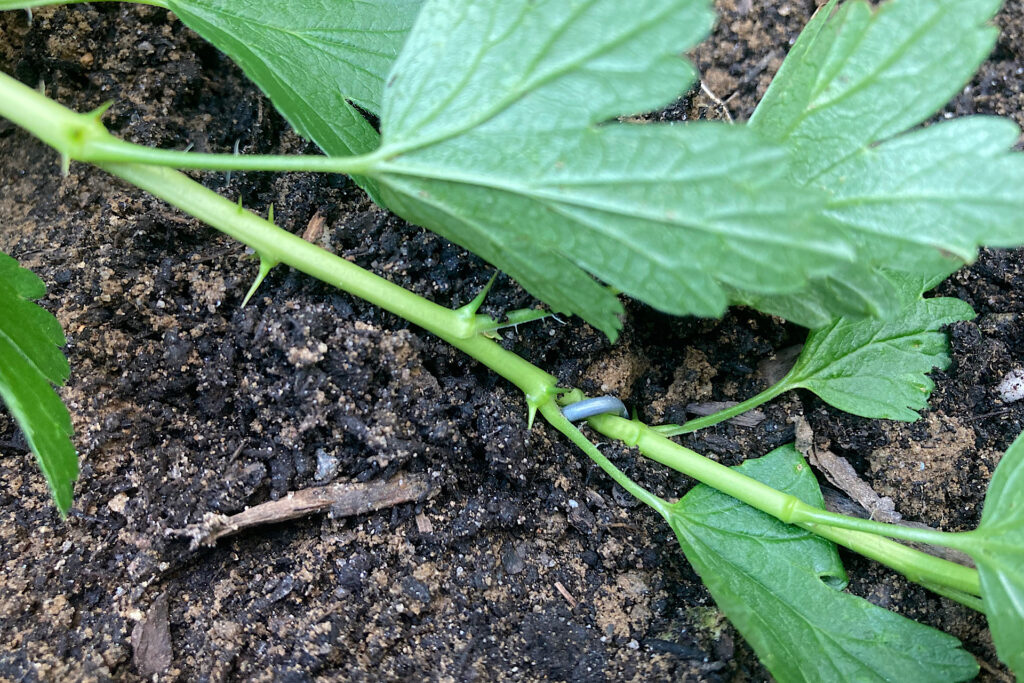
How Can I Propagate My Gooseberry Plant?
There are several articles that give propagation tips using cuttings. I’ve learned, however, that gooseberries are self-propagating. I manage mine in much the same way I propagate strawberry plants. Simply ensure the tip of the plant makes contact with the soil and it will root itself. Eventually, you can separate it from the mother plant and move it elsewhere if you would like.
My husband made me a simple set of pins using lengths of 14-gauge galvanized steel wire. I use them for my strawberries and my gooseberry plants. Gardeners also use rock with success to hold down the tips, but I find these pins to work really well.
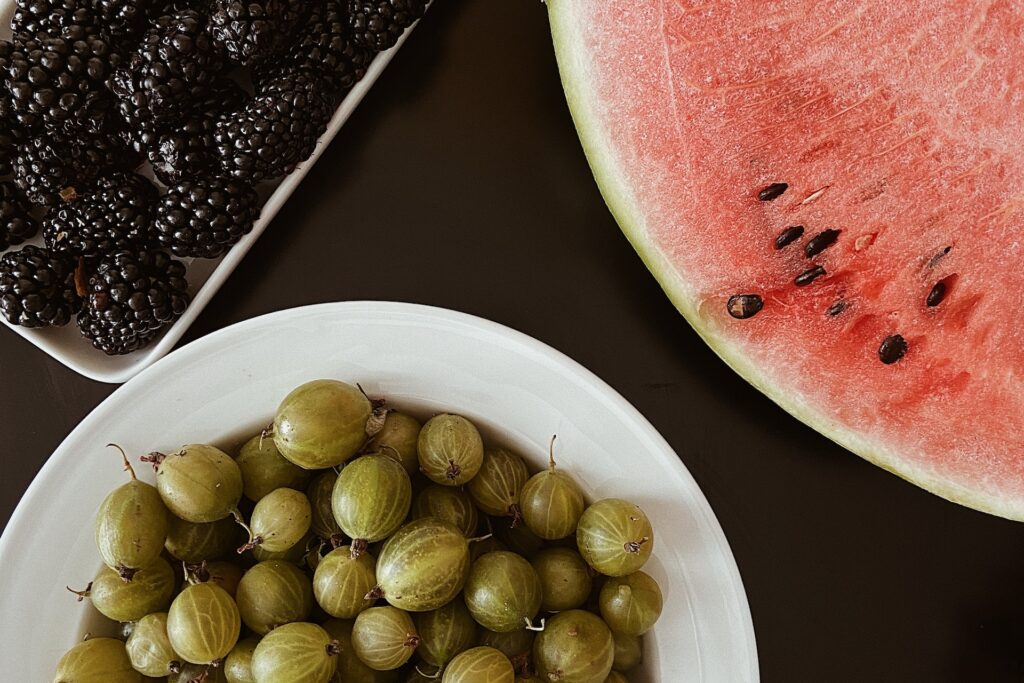
I urge you to consider adding gooseberries to your future plantings list. You won’t be disappointed! Let me know how they do in your corner of the garden.
